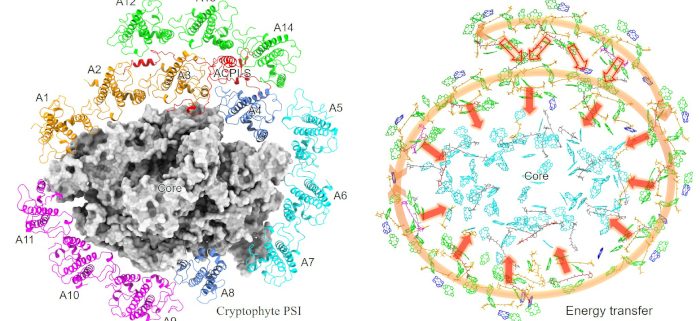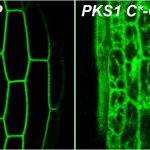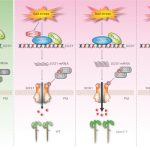Cryptophyte PSI–LHCI supercomplexes: understanding the structural diversity and evolution of PSI–LHCI in the red lineage
Long-Sheng Zhao1 and Lu-Ning Liu2.
1State Key Laboratory of Microbial Technology, Shandong University, Qingdao, China.
2Institute of Systems, Molecular and Integrative Biology, University of Liverpool, Liverpool L69 7ZB, United Kingdom.
Background: Photosynthesis converts solar energy into biologically useful energy and generates oxygen, sustaining almost all life forms on Earth. Photosystem I (PSI) is a large pigment-protein supercomplex that plays a key role in photosynthesis. High-resolution structural analysis of the PSI and its antenna complexes is crucial for elucidating the mechanism of light capture and energy transfer in photoautotrophs. So far, the PSI structures of cyanobacteria, red algae, green algae, diatom, moss, and land plants have been resolved, providing insights into the energy conversion mechanisms and important clues for the evolutionary diversity of PSI–LHCI structures.
Question: Cryptophytes are an ancient group that originated from red algae during secondary endosymbiosis. They possess unique evolutionary traits and play a crucial role in ecology. Despite their importance in ecological function and evolution, the high-resolution structure of cryptophyte PSI remains elusive.
Findings: The PSI–light-harvesting antenna (LHCI) supercomplex was isolated from a cryptophyte Chroomonas placoidea and its structure was determined by cryo-EM. Cryptophyte PSI is composed of 14 core subunits, 14 LHCIs surrounding the PSI core and a pigment-binding polypeptide not present in any other reported PSI–LHCI complexes. The structure coordinates a total of 373 pigments which facilitate efficient capturing of light and energy transfer from LHCIs to the PSI core. Cryptophyte PSI–LHCI shares common structural features with both red algal and diatom counterparts, while also displaying unique protein organization, pigment association, and energy transfer pathways. By uncovering these structural variations, our study sheds light on the unique features of cryptophyte PSI–LHCI as an intermediate state during the evolution of red lineage PSI–LHCI.
Next steps: Our cryo-EM structure reveals an intense pigment network within cryptophyte PSI–LHCI. Comprehensive and accurate analysis of energy transfer pathways in cryptophyte PSI–LHCI relative to the PSI–LHCI from other photoautotrophs needs to be performed experimentally and theoretically. Moreover, uncovering the PSI–LHCI structures of various species is critical to understanding the structural diversity of PSI–LHCI during evolution and environmental adaptation.
Reference:
Long-Sheng Zhao, Peng Wang, Kang Li, Quan-Bao Zhang, Fei-Yu He, Chun-Yang Li, Hai-Nan Su, Xiu-Lan Chen, Lu-Ning Liu, Yu-Zhong Zhang (2023) Structural basis and evolution of the photosystem I–light-harvesting supercomplex of cryptophyte algae. https://doi.org/10.1093/plcell/koad087




